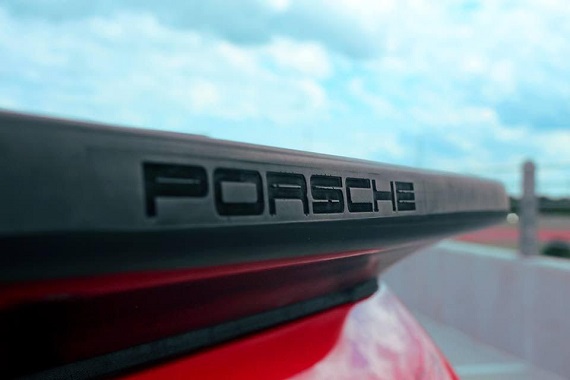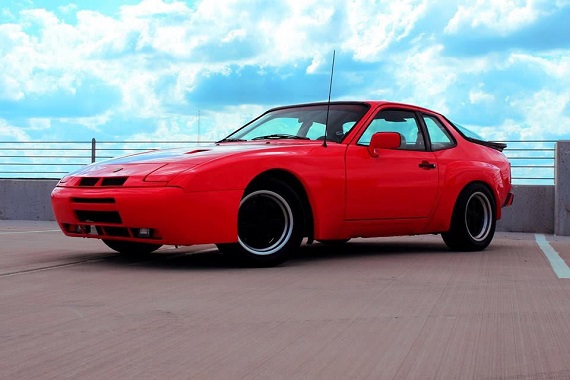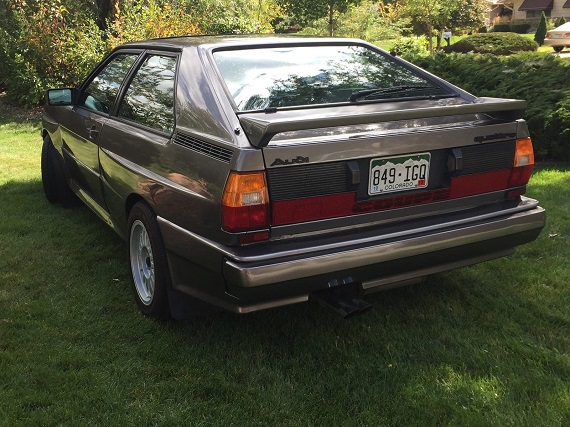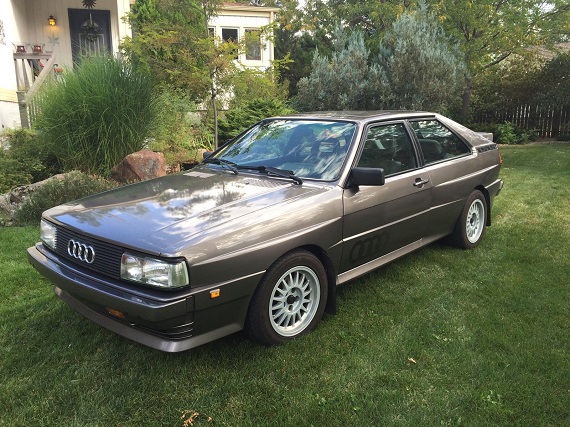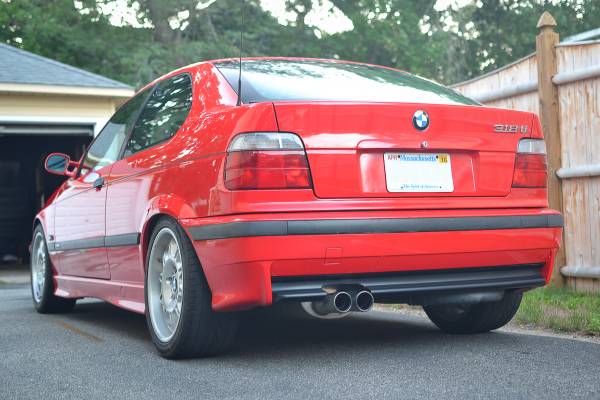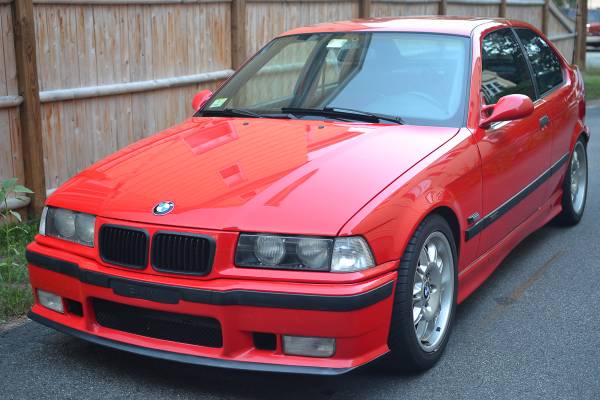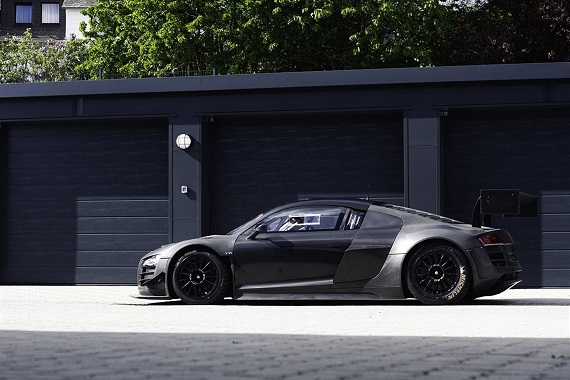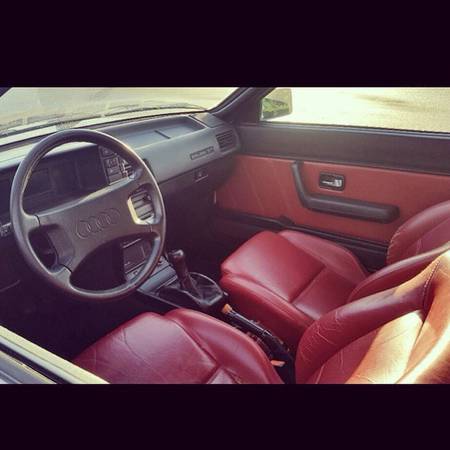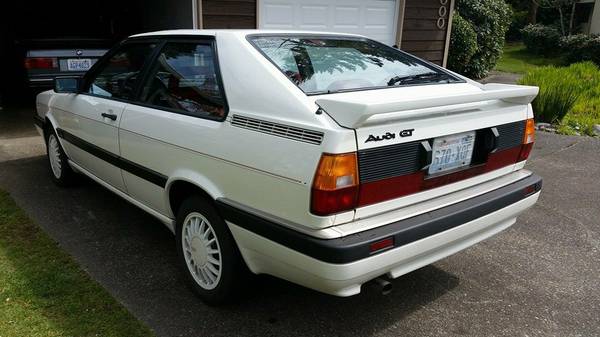The Porsche 924 represents some of the best aspects of automobile enthusiasts, while simultaneously embodying two distinct and very different decades. From the 1970s comes the upright, modernist and simple dashboard, but while it nods to the decade that bore it, the exterior is immediately identifiable as the 1980s signature silhouette with a low-slung, long hood, pronounced bumpers and flip-up headlights. Quite a few cars in the late 1970s and 1980s attempted to mimic the design of the 924, including the notable RX-7 and you could even argue the 280/300ZX. You can even see influence of the groundbreaking 924 design in the Miata of the late 1980s as well as such modern GT cars at the AMG GT-S. For enthusiasts, though, it was the near perfect weight distribution, the torquey inline-4, the manual gearbox and the all-important Porsche badge of engineering and build quality that led to the 924 being a hit. It didn’t hurt that it was the most affordable Porsche, either, and arguably still is so today. I’ve rounded up a group of 3 distinct and neat 924S models from late in the run to see which offers the most bang for your buck:
Author: Carter
What’s the perfect commuter car? Well, that varies by your definition of commuter, how far you need to drive and how much traffic you encounter, and what your goal is – do you want high mileage, or perhaps you want extreme comfort and isolation. But I’d like to think that a fair amount of our readership would love to have a dual purpose car. It would be something that wouldn’t be a collector-status car, but yet one that was unique and not often seen. It would combine comfort and affordability. While some would opt for automatics, I’m sure a larger percentage would choose to row-their-own boat. Fuel mileage, while gas is cheap now, would probably still be a consideration, as would maintenance. And finally, when the traffic cleared and there was a empty bit of road, most of us like to squeeze the pedal down that bit further and be rewarded by and entertaining push in the back. That’s a difficult grouping of characteristics to achieve in one package, but I’d like to suggest that this 318ti might just be the car.
The Club Sport was the answer to the question that effectively no one was asking in 1995; depending on the source, BMW sold a reported 200-300 of them in 1995 only. What the option 9530 got you was a 318ti hatchback that had been breathed upon by BMW Individual. Added were 16″ sport wheels, M3 front bumper, rocker trim and mirrors and a special rear bumper. But it was more than an appearance package, because it also received a M-tuned suspension, special steering wheel and shift knob and uniquely trimmed Millpoint M-cloth sport seats. The seller of this car has brought the performance up to M levels, though, with the addition of a PSS9 coilover suspension, double spoke M3 wheels and supercharger to the M42 inline-4:
CLICK FOR DETAILS: 1995 BMW 318ti Club Sport on eBay
1 CommentIf you were a gentleman racer over the best part of the past decade and a half, there was only one natural choice for your steed; the Porsche 911 GT3 Cup car was, and still is, the most popular choice for factory supported full race cars to buy brand new. But we can thank the success of the Cup formula for an entirely new lineup of racers, from the Lamborghini Super Trofeo to the track-oriented Laguna Seca Mustangs. In the FIA mandated GT3 field, the advent of the Pro/Am designations have similarly diversified the field from the standard Porsches to new entrants, from the seemingly outrageous Bentley Continental GT3 to the Aston Martin Vantage GT3. But while those names may seem like newcomers on the international circuits, the reality is that both the heritage of Bentley and Aston Martin lay exactly with those gentleman racers. No, the real newcomer to the block is the Audi R8; a name steeped in Le Mans history but a chassis built for the street, the GT3 effort resulted in the popular and sonorous R8 LMS Ultra, as Audi shifted its focus from showcasing quattro all-wheel drive in racing to the lightweight technology incorporated into the new mid-engined racer:
CLICK FOR DETAILS: 2012 Audi R8 LMS Ultra on Race Cars Direct
2 CommentsI know, I know – another Audi B2 post. But hey, we hear about every single variant of 911 all the time too, and since I love the GTs I think they deserve to be showcased. There weren’t many special editions of the GT produced, but in 1986 Audi made an entire run of “Commemorative Design” cars. The 4000CS, 4000CS quattro, Coupe GT and 5000 models all got special upgrades and each were slightly different. The closest were the 4000 quattro and Coupe GT, which shared paint colors and interiors. The exteriors were either Graphite Metallic or Alpine White, but inside they shared the same lipstick red “Mouton” leather. While the quattro got the slightly uprated JT code 115 horsepower inline-5, the GT relied on the “KX” code motor with 110 ponies. The difference lay in the exhaust manifold; the GT unit was a 5-1 cast manifold, while the quattro had a beefier 5-3-1 exit, along with a larger diameter exhaust. However, the lighter GT was quicker than the all wheel drive variant; and thanks to the nature of the GT versus the quattro market, more of the special 1986 models have survived. The ’86 CE models also received the notorious digital dash, and if you selected Alpine White, they had color matched wheels, mirrors and rear spoiler. The color combination really makes the sharp Giugiaro lines stand out:
